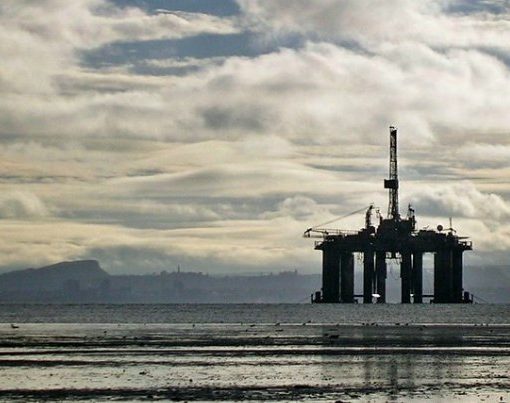With the S&P 500 down by 9% on the year as of February 10th, we’re off to the worst start since the recessionary year of 2008.
If there was any hint of over-optimism on the part of investors heading into the New Year, that by now is gone.
We live in a time growing with extremes wherever you may find them – market moves, the weather, politics.
If the market climbs a wall of worry, then there are bloodied fingernails from trying to hang on. And, unfortunately, February hasn’t offered any firm holds for investors.

Risk Factors
Much like last year, the culprits to this year’s market correction aren’t much of a surprise – plunging oil prices, concern that China’s slowing growth will create contagion, and rising stress in credit and debt markets.
Typically, when we have seen oil and stocks so synchronized in extreme price moves it portends an end to the bull market run or an impending recession.
By far the biggest story this year is oil, especially the interesting and inextricable link to all things financial (be it stocks, the US dollar, other commodities or credit markets).
Given the swift drop in oil prices, it’s creating a negative feedback loop. On any given day, if oil is down you can then assume stocks must be down as well.
Oil Vey!
Oil prices have plunged nearly 70% from their mid-2014 high, testing 13-year lows around $25 a barrel.
For now, prices are low given a global supply glut exacerbated by OPEC’s effort to flood the world with oil in an effort to drive domestic shale producers out of business; the return of Iranian oil and increased Iraqi volumes.
On top of that, Saudi Arabia is boosting production to hold onto market share and a few non-OPEC oil producers (like Russia) refuse to cut production.
Add into the mix slumping global oil demand exasperated by China’s slowing economy and it makes for one heck of an unbalanced situation.
Gas Pump Dividend
Traditional thinking is that lower energy costs are positive to US consumers, which they are, especially at the gas pump.
Sure a few hundred dollars in fuel savings for the average American adds up. However, it doesn’t move the needle all that much.
Over the past year, low oil prices have devastated the profits of energy companies and related service companies, which has impacted the markets.
But on the flipside, that means energy savings for consumers and energy-intensive businesses that will deploy these savings elsewhere.
Some economists predict upwards of $3 trillion a year will be transferred from oil producers to global consumers, setting off one of the largest wealth transfers in history.
Supply Math
Over the past few months, the focus has shifted from an oversupply issue to an underwhelming demand for oil, hinting at a global economic slowdown.
That’s a bit misleading as consumption demand rose by 3.1 million barrels a day, according to the International Energy Agency. It’s just not the uptake of 5 million barrels a day that’s needed to balance out current production.
As the world adjusts to lower oil prices, the expected stimulus of increased demand by oil-importing countries and oil-intensive industries has not yet materialized.
Oil demand in oil-exporting countries is weakening as well, exasperated by the impact of falling revenues constraining domestic demand as their economies contract.
Banks at Risk
Lately, attention has turned to the creditors who lent money to commodity producers.
Increasingly, fingers are being pointed at European banks where there are 1.9 trillion euros (US $2.1 trillion) in loans that aren’t being repaid on time.
These banks need to write down these non-performing loans, rework the loans in some meaningful way, or ring-fence their bad banking from good banking operations.
US Exposure
US banks have exposure too, but mostly to domestic oil producers and related service companies and nothing that remotely approaches $1 trillion.
Wells Fargo (WFC) recently announced that their exposure to the oil and gas sector is $42 billion. The exposure should be contained but that’s what the banks said about subprime home loans.
Domestically, frackers couldn’t get enough of a good thing and now find themselves head-over heels in debt, extended to them by banks and through high-yield or junk bond issuance.
The US corporate default rate is expected to rise, possibly significantly this year, with Moody’s predicting it will reach a six-year high of 4.4% this year. And, BCA Research estimates that 15% of the principal value of energy related junk debt could default this year.
Mighty Dollar
The years-long boom in dollar borrowing by emerging market companies has come abruptly to an end.
Their inability to access capital is further exasperating a combination of disappointing economic growth, sharp commodity price declines, and currency exchange rate volatility.
A strong US dollar is problematic for emerging markets because it makes it more expensive in local currency terms to pay back any debt that’s in dollars, especially after the US dollar jumped about 30% against many emerging market currencies last year.
The Bank for International Settlements (BIS) estimates that emerging market companies have $3.3 trillion of dollar-denominated debt outstanding, about 1/3 of their bonds.
And of that, oil and gas companies’ total bonds outstanding is $1.4 trillion (as of 2014) with a substantial portion of that borrowing by state-owned oil companies.
Lock-Step
Not only is oil moving in lock-step with equities, it’s also mimicking moves in the US dollar. While oil prices have tracked the Standard & Poor’s 500 Index quite closely this year, the link between moves in crude oil and the dollar is also extremely correlated.
The inverse oil-dollar link is about as strong as oil’s tie to stocks as the 30-day correlation between West Texas Intermediate (WTI) crude and the dollar index had 91% negative/inverse correlation late last month, while oil’s correlation with the S&P 500 surpassed 95% positive correlation over the same period.
It’s quite an anomaly, but maybe oil’s hold on the S&P 500 comes down to the dollar’s movement. It’s especially telling of all the extremes one finds these days.
So when will we see equilibrium – the world’s oil supply and demand balancing one another out? In my opinion, that will come as the price of oil matches the cost of production – coming once rigs are stacked, wells shut-in, planned investments scrapped, and bankruptcies mount.
The Swerve
In my opinion, at some point (later this year or in 2017?), oil demand growth supported by cheaper prices will sop up the surplus and help bring the market into balance.
A stable price, be it at $40 or $50 a barrel, creates a more predictable environment for producers and consumers alike.
If a recession is coming to US shores, it would also be the first time in history it was preceded by a crash in oil prices. More often than not, it’s a surge in oil prices which helps trigger a recession.
Once we’ve seen a bottoming in oil (a pact between OPEC and non-OPEC producers?), in my opinion, we’ll move away from the extreme correlations we’ve witnessed and oil won’t be the tail wagging the stock market dog.
Photo Credit: Paul Lowry via Flickr Creative Commons



